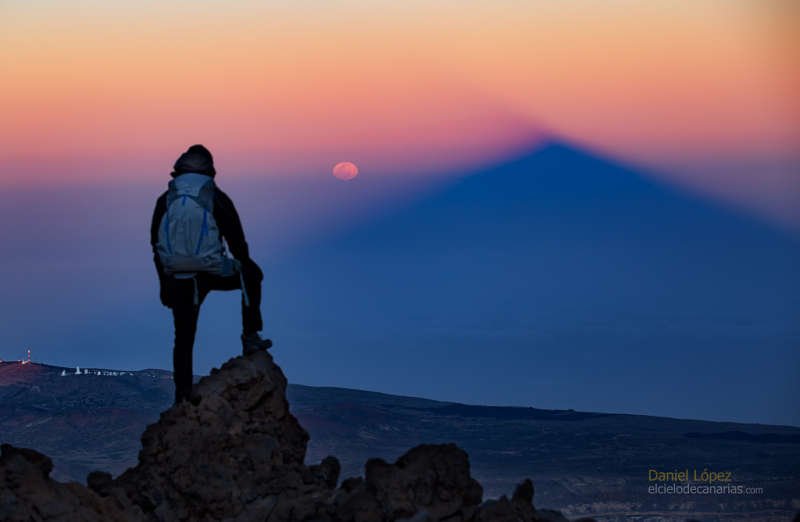Credit & Copyright: Daniel Lopez
(El Cielo de Canarias)
Explanation:
What
phase of the Moon is 3.14 radians from the Sun?
The Full Moon, of course.
Even though the
Moon might look full
for several days, the Moon is truly at its full phase when it is
Pi radians
(aka 180 degrees) from the Sun in ecliptic longitude.
That's opposite the Sun in planet Earth's sky.
Rising as the Sun set on March 9, 2020, only an hour or so after the moment of
its full phase, this orange tinted and
slightly flattened
Moon still looked full.
It was photographed opposite the setting Sun from Teide National Park
on the Canary Island of Tenerife.
Also opposite the setting Sun, seen from near the Teide volcano peak
about 3,500 meters above sea level, is the mountain's rising
triangular shadow
extending into Earth's dense atmosphere.
Below the distant ridge line on the left are the
white telescope domes of
Teide
Observatory.
Again Pi radians from the Sun, on March 25 the Full Moon will dim
slightly as it glides through Earth's outer shadow in a
penumbral lunar eclipse.
1999 2000 2001 2002 2003 2004 2005 2006 2007 2008 2009 2010 2011 2012 2013 2014 2015 2016 2017 2018 2019 2020 2021 2022 2023 2024 2025 |
Yanvar' Fevral' Mart Aprel' Mai Iyun' Iyul' Avgust Sentyabr' Oktyabr' Noyabr' Dekabr' |
NASA Web Site Statements, Warnings, and Disclaimers
NASA Official: Jay Norris. Specific rights apply.
A service of: LHEA at NASA / GSFC
& Michigan Tech. U.
|
Publikacii s klyuchevymi slovami:
Moon - Luna
Publikacii so slovami: Moon - Luna | |
Sm. takzhe:
Vse publikacii na tu zhe temu >> | |
